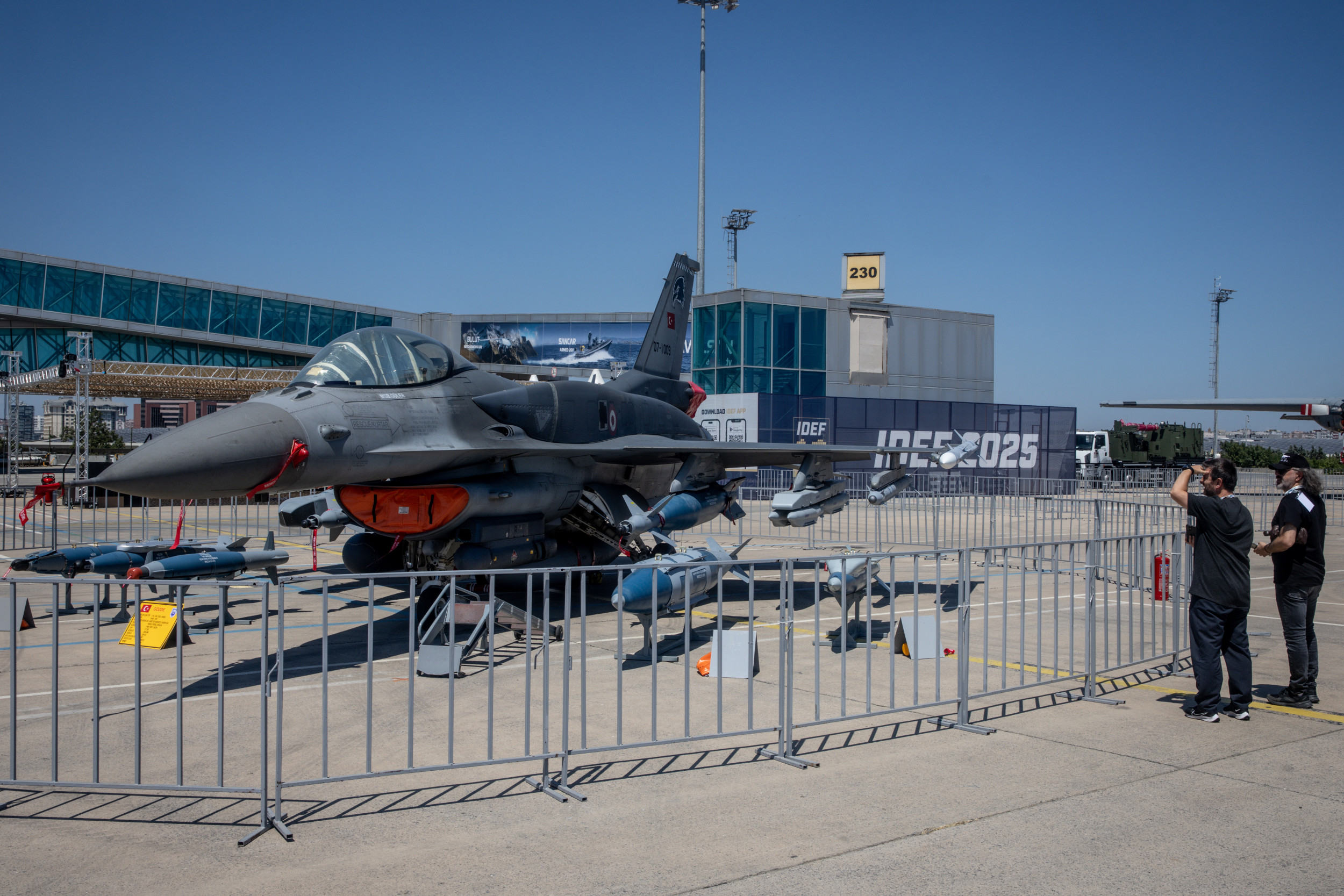
Turkey’s KAAN fighter aircraft could soon rival the U.S.-made F‑35 stealth jet in arms sales to the Global South by positioning itself as a more accessible alternative.
The Turkish offering is generating interest from emerging economies. In late July, Turkey inked its first export deal with Indonesia, the world’s largest Muslim country, for 48 planes, the governments said.
The Turkish Foreign Ministry did not immediately respond to a written request for comment.
Why It Matters
Turkey’s first domestically developed fifth‑generation stealth fighter was part of a major pivot toward self-reliance in defense technology. Having previously armed itself with Western military tech, Turkey is now gaining ground in a field long dominated by the United States, the Soviet Union and later Russia, European powers and China.
Its arms industry has gained a following after the early success of the Bayraktar TB2 drone, used by Ukraine against Russia.
Chris McGrath/Getty Images
What To Know
The KAAN fighter, developed by state-owned Turkish Aerospace Industries (TAI) is intended to replace Turkey’s aging fleet of F-16s and is being positioned as a low-cost alternative for its neighbors, too.
The aircraft is expected to be more affordable than the U.S. F‑35, made by Lockheed Martin, according to TAI’s leadership.
Turkey’s 2019 exclusion from the F-35 program over its purchase of S-400 missile systems from Russia marked Ankara’s shift toward strategic autonomy under President Recep Tayyip Erdogan. Before the split, Turkish firms had built over 900 F-35 parts, gaining key experience in stealth and aerospace tech.
Increasing interest has emerged since the KAAN’s first test flight in 2024, with reports pointing to Egypt becoming the next participant in the jet program, although no official statements have been made by Cairo or Ankara.
Turkey’s deal to supply Indonesia was first revealed by Erdogan in June. The agreement with Jakarta, which has a history of using NATO equipment in its armed forces, “showcases the progress and achievements of our domestic and national defense industry,” Erdogan said.
America’s Gulf partners have also shown an interest in the KAAN, with Washington still reluctant to transfer advanced systems to the region in order to preserve Israel’s military edge. The U.S. and Turkey, meanwhile, remain at odds over Gaza, in addition to existing Israel-Turkey tensions over Syria.
Erdogan still wants F-35 jets for the Turkish air force, however, and recently announced progress in talks with U.S. President Donald Trump, raising concerns in Israel.
What People Are Saying
Rear Admiral (retired) Mark Montgomery, senior director of the Center on Cyber and Technology Innovation at the Foundation for Defense of Democracies, wrote in an analysis on July 2: “Turkey should not get access to U.S. F-35 sales until it destroys or returns the S-400 air defense missile system it foolishly purchased from Russia, and also, not until it publicly renounces and completely ceases support for Hamas—a vicious terrorist organization that targets and kills Americans. Turkey may be a member of NATO, but it has not treated the United States with respect for decades.”
President Prabowo Subianto of Indonesia said in April “Indonesia wants to participate in the development of the ‘KAAN’ fifth-generation fighter jet and submarine development with the Turkish industry.”
Can Kasapoglu, a senior nonresident fellow at the Hudson Institute, wrote in a report for the Atlantic Council on June 24, 2024: “Another natural target for Turkey’s multirole combat solution would be militaries that want to replace their Soviet era-remnant arsenals with a defense ecosystem that is in line with NATO standards, such as the non-NATO former Soviet space, which has traditionally been Russia‘s markets. In this regard, Azerbaijan and Ukraine loom large as two particularly interesting potential operator nations as KAAN’s export market slowly takes shape in the coming years.
What Happens Next
Turkey aims to begin operational deployment of the KAAN fighter by 2028.
